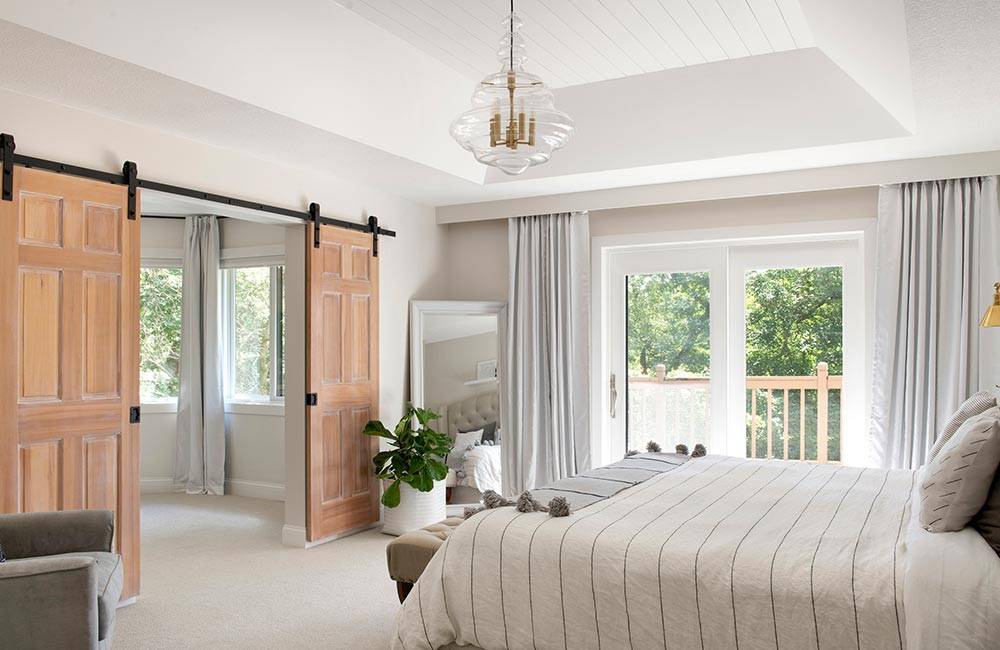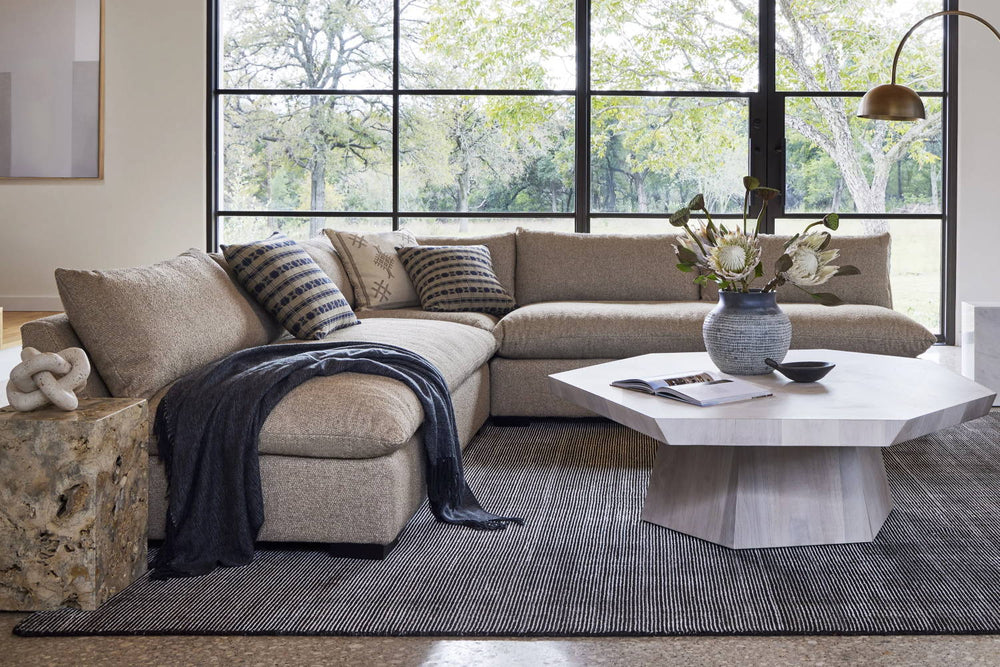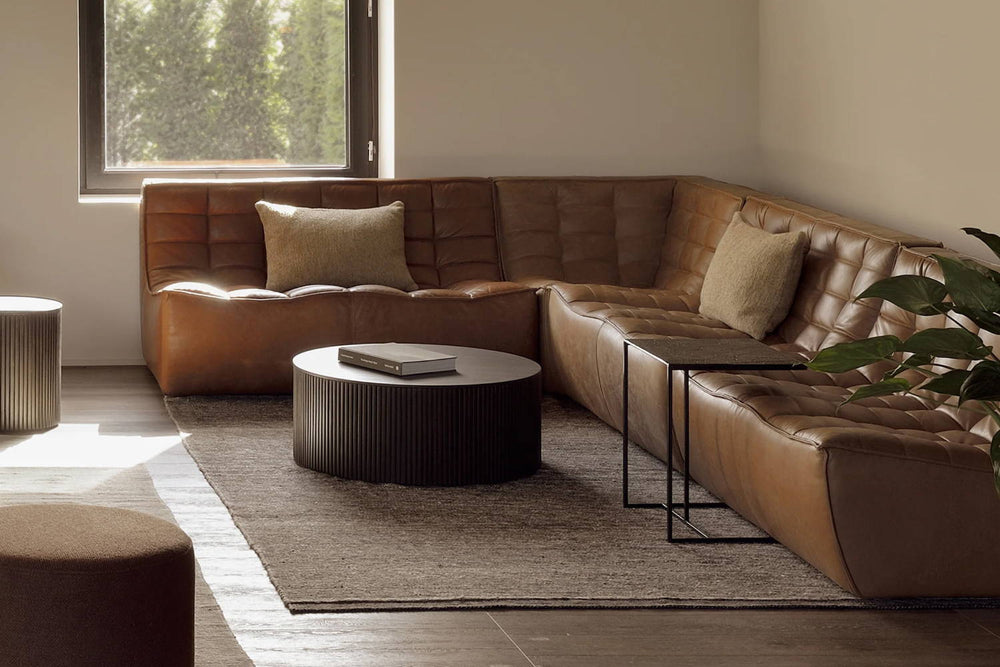Dining rooms often serve many purposes beyond simply being a place for enjoying a meal. Because modern dining rooms may serve as informal gathering spaces, temporary home offices, and even recreation rooms, contemporary dining room lighting will need to be just as flexible, thoughtfully designed to meet a variety of needs.
Know the basic types of modern dining room lighting.
AMBIENT LIGHTING: Designed for general illumination, ambient lighting sets the overall mood (or ambiance) for a room, and is usually provided via a light source from above—modern pendant lights, chandeliers or modern ceiling lights—that disperses light across a large area.
ACCENT LIGHTING: Accent lighting highlights an object or area of a dining room primarily for esthetic purposes. A piece of art, architectural details, or objects in a display cabinet, for instance, may benefit from modern accent lighting. Ideally 3 times brighter than ambient light, examples of accent lighting include track-mounted spotlights, wall-mounted art lights, or inner cabinet lighting.
TASK LIGHTING: Designed for specific, pinpointed illumination, task lighting can take the form of a modern table lamp with articulated arms, under-cabinet lighting, or a series of spotlights. With a narrower area range, modern task lighting adds illumination to a specific area that may otherwise be underserved by ambient lighting.
DECORATIVE LIGHTING: A decorative light’s primary purpose is, as the name suggests, decorative, as opposed to functional. A visually striking mid century modern table lamp that’s also a family heirloom, for instance, may be defined as decorative lighting, as much a design object as lamp. Decorative lighting may be perfectly functional, but its purpose is primarily visual.
Think beyond the modern dining table.
While the modern dining table remains central to a dining space, other areas in the room will also benefit from thoughtful lighting, ultimately enhancing the entire space. Installing a range of lighting solutions for the various areas within your dining room is the best way to create a space that remains adaptable to many uses.
Because a single lighting solution or lighting fixture is unlikely to solve the various modern lighting requirements of a dining room, a lighting plan that includes several layers of light is an ideal solution. These lighting layers can be used separately or simultaneously, depending on any given specific need.
Create a layered modern lighting scheme.
The following guidelines for installing specific modern lighting designs may help create a layered lighting scheme that optimizes your dining room space, both visually and functionally.
Contemporary Chandeliers
& Pendant Lights
A modern chandelier or large pendant light is an obvious solution for primary dining room lighting, and typically is a focal point when installed above the dining table. Dramatic and attention-getting, modern chandeliers or pendant lights add visual flair and functional lighting that informs a dining room’s overall mood and ambience.
If a single modern pendant light is not your preference, a linear pendant—in which multiple lighting elements reside under a single canopy—or an arrangement of several contemporary pendant lights may also offer a dramatic and visually arresting solution.
With either option, be mindful of both proportion and height. As a rule of thumb, a chandelier's width should be 12 inches narrower than the diameter or width of the dining table, while the distance between the dining table's surface and the bottom of the chandelier or pendant(s) should be about 30 inches.
Modern Sconces & Table Lamps
Sconces can serve the dual purpose of providing both ambient light and accent lighting. In a large dining room, for instance, a pair of contemporary wall sconces may be ideal for providing ambient light to an area not reached by a modern chandelier or pendant light—near a doorway or in a corner, for instance. Additionally, sconces can serve to highlight a work of art or a specific architectural detail in a more subtle and nuanced way.
Similarly, modern table lamps placed on a buffet or sideboard can provide both practical illumination while also casting ambient lighting that bathes displayed items in a flattering glow. These kinds of light sources serve multiple uses, making them adaptable to a modern dining room's many functions.
Recessed Lighting & Modern Track Lighting
Recessed and track lighting can play a key role in some dining rooms. Along the perimeter of a large room, for instance, recessed lighting can 'disappear' into the ceiling, but can disperse both vital and nuanced lighting when needed.
Depending on the layout of a room, modern recessed or track lighting can also double as accent lighting, highlighting architectural details or even the color of a wall. Track lighting is best used on the periphery of a dining room, however, so as to not create unflattering shadows in combination with other light sources.
Don't forget Dimmers!
It's impossible to overstate the importance of dimmers in a modern dining room (or any room), irrespective of which type of lighting you select. Dimmers, particularly those for harsher lighting, like track lighting, are essential to creating a space that's both functional and nuanced. A modern lighting design that can't be adjusted is inherently devoid of adaptability and flexibility—two features that are key to a well lit room.








